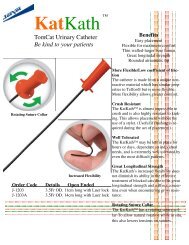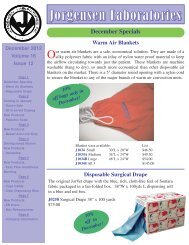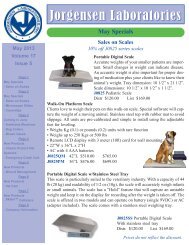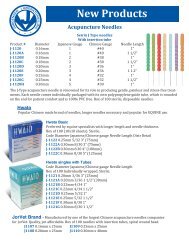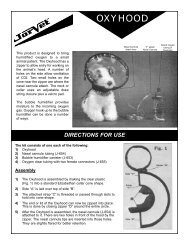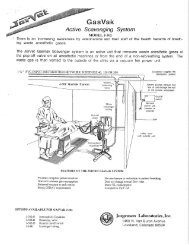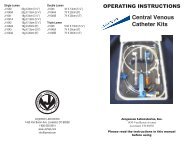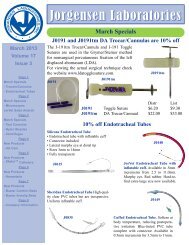Using the Doppler Blood Pressure Monitor - Jorgensen Laboratories
Using the Doppler Blood Pressure Monitor - Jorgensen Laboratories
Using the Doppler Blood Pressure Monitor - Jorgensen Laboratories
You also want an ePaper? Increase the reach of your titles
YUMPU automatically turns print PDFs into web optimized ePapers that Google loves.
Figure 4:The small left kidney is typical of chronic<br />
renal disease in old cats.<br />
Figure 6: The transducer is held in place with <strong>the</strong> thumb.<br />
Firm pressure is required; however, too much pressure<br />
can close <strong>the</strong> artery.<br />
Figure 5: Hair is shaved over <strong>the</strong> cranial tibial artery so<br />
<strong>the</strong> transducer can make good contact with <strong>the</strong> skin.<br />
Figure 7: The position of <strong>the</strong> needle on <strong>the</strong> manometer is<br />
noted when <strong>the</strong> arterial swish returns.<br />
7) Apply coupling gel to <strong>the</strong> ventral surface of<br />
<strong>the</strong> transducer.<br />
8) Position <strong>the</strong> transducer over <strong>the</strong> artery. The<br />
median tibial artery is usually slightly medial to<br />
midline. It will be necessary to move <strong>the</strong> transducer<br />
until <strong>the</strong> swishing of <strong>the</strong> blood is heard<br />
in <strong>the</strong> artery. Hold it in place with your thumb.<br />
(Figure 6) It may be necessary to apply firm<br />
pressure to assure proper contact between<br />
<strong>the</strong> transducer and <strong>the</strong> skin.<br />
9) Squeeze <strong>the</strong> bulb on <strong>the</strong> manometer until<br />
<strong>the</strong> pressure in <strong>the</strong> cuff exceeds that of <strong>the</strong><br />
artery. At that point <strong>the</strong> swishing of blood in<br />
<strong>the</strong> artery will no longer be heard. (Figure 7)<br />
Note that filling <strong>the</strong> cuff too rapidly may<br />
frighten your patient.<br />
10) Slowly bleed off <strong>the</strong> pressure in <strong>the</strong> cuff by<br />
squeezing <strong>the</strong> manometer’s trigger. When <strong>the</strong><br />
pressure in <strong>the</strong> cuff falls below <strong>the</strong> arterial<br />
pressure, <strong>the</strong> arterial swishing sound can be<br />
heard again. This should be noted and recorded<br />
as <strong>the</strong> systolic pressure.<br />
11) The conventional approach is for seven<br />
measurements to be taken. Discard <strong>the</strong> high




